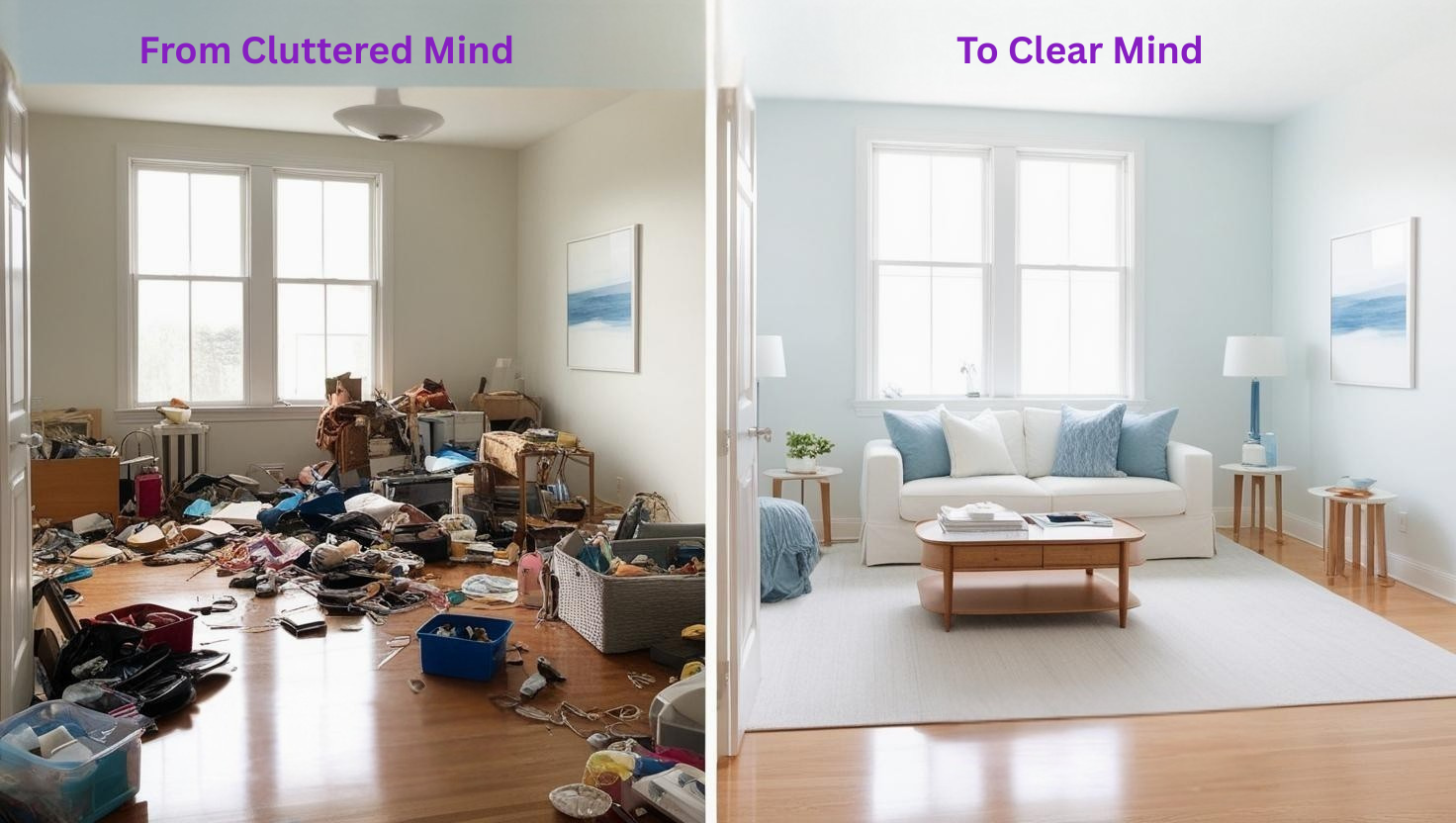
Spring Cleaning for the Mind - Part 2 of 3
Part 2: Strategies for Managing Mental Clutter
In Part 1 of this series, we explored what mental clutter is and how it can impact our ability to think clearly, manage stress, and perform effectively—both personally and professionally. Now, let’s shift focus: what proactive steps can we take to reduce mental clutter and regain clarity?
Step 1: Assess Your Mental Landscape
 Much
like
spring
cleaning
a
physical
space,
mental
clarity
begins
with
honest
assessment.
Set
aside
10–15
minutes
in
a
quiet
environment
to
check
in
with
yourself.
Mindful
reflection
can
be
a
powerful
tool.
Ask
yourself:
Much
like
spring
cleaning
a
physical
space,
mental
clarity
begins
with
honest
assessment.
Set
aside
10–15
minutes
in
a
quiet
environment
to
check
in
with
yourself.
Mindful
reflection
can
be
a
powerful
tool.
Ask
yourself:
-
Have I become more negative in my thinking lately?
-
Am I feeling less motivated to pursue goals I previously set?
-
Is decision-making becoming more difficult or emotionally driven?
-
Do I feel overwhelmed when facing challenges?
The key here is intentional self-awareness. By pausing to ask these questions, you begin to identify your current state of mind—and create space for positive change.
Step 2: Identify Thought Patterns
 Once
you've
taken
time
to
reflect,
document
your
thoughts.
Whether
in
a
notebook,
digital
journal,
or
note-taking
app,
write
down
what
emerged
during
your
assessment.
Once
you've
taken
time
to
reflect,
document
your
thoughts.
Whether
in
a
notebook,
digital
journal,
or
note-taking
app,
write
down
what
emerged
during
your
assessment.
Separate these thoughts into two categories: productive and unproductive. Ask:
-
Are there recurring negative thoughts about myself, my role, my team, or broader life circumstances?
-
Are those thoughts based on facts, or are they emotional reactions that no longer serve a purpose?
-
Which of these thought patterns are helping me grow—and which are holding me back?
This exercise is similar to reviewing items in a workspace or office: What’s helping me stay efficient, and what’s creating distraction or drag?
Step 3: Begin the Decluttering Process
 Just
as
physical
clutter
needs
to
be
removed—not
just
piled
in
a
corner—mental
clutter
must
be
actively
addressed.
Now
that
you’ve
identified
unproductive
thoughts,
it’s
time
to
let
them
go.
Just
as
physical
clutter
needs
to
be
removed—not
just
piled
in
a
corner—mental
clutter
must
be
actively
addressed.
Now
that
you’ve
identified
unproductive
thoughts,
it’s
time
to
let
them
go.
Think of it this way: you’ve “bagged up” the unnecessary thoughts. The next step is to mentally discard them. That might mean:
-
Reframing negative self-talk into constructive feedback.
-
Letting go of unrealistic expectations or outdated goals.
-
Prioritizing tasks that align with your values and objectives.
-
Setting boundaries to minimize unnecessary stress or distractions.
The goal is to clear out what no longer serves you—making room for clarity, focus, and renewed motivation.
Part 3 focuses on practical strategies to help eliminate mental clutter and overcome negative thought patterns for lasting clarity and peace of mind.

-Julie "Brain Lady" Anderson
